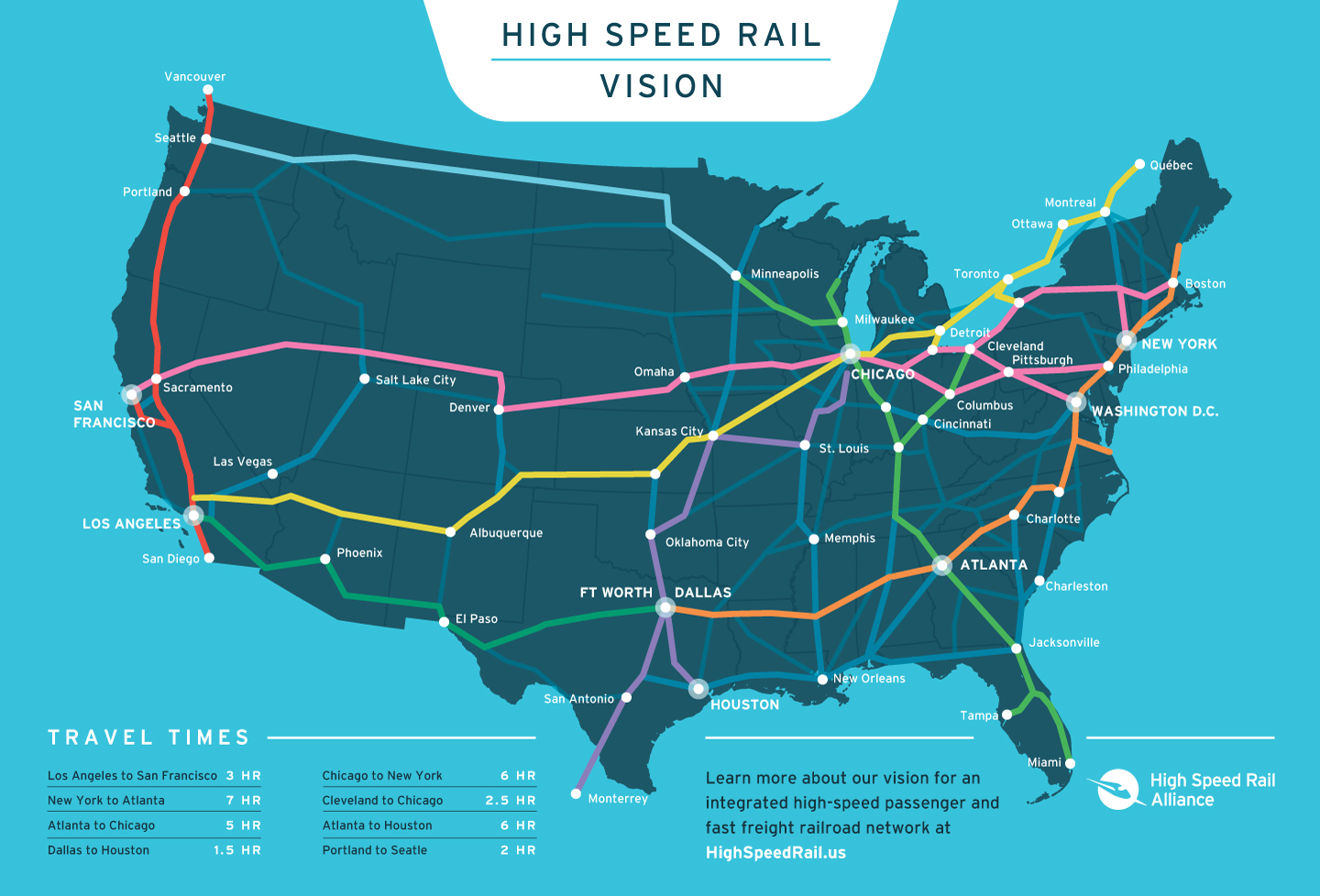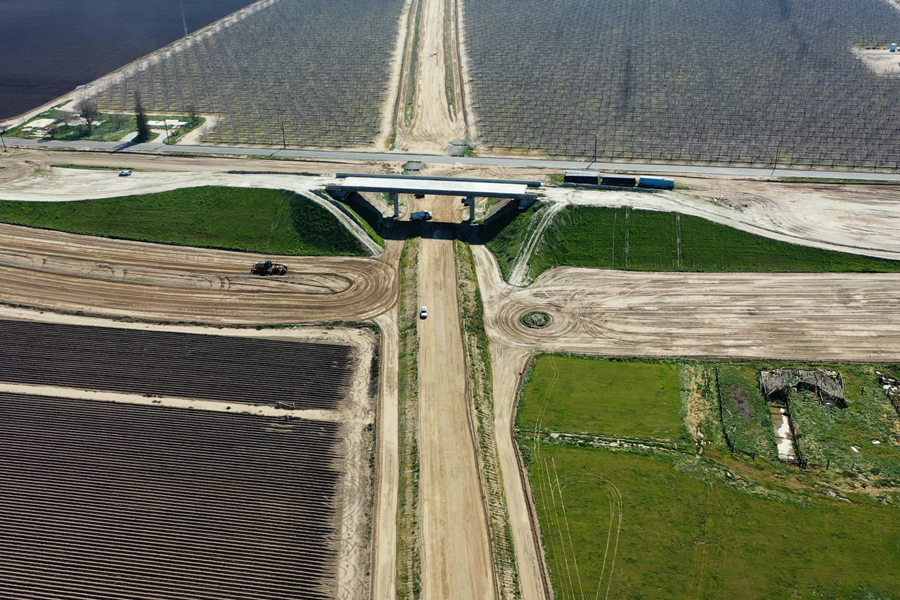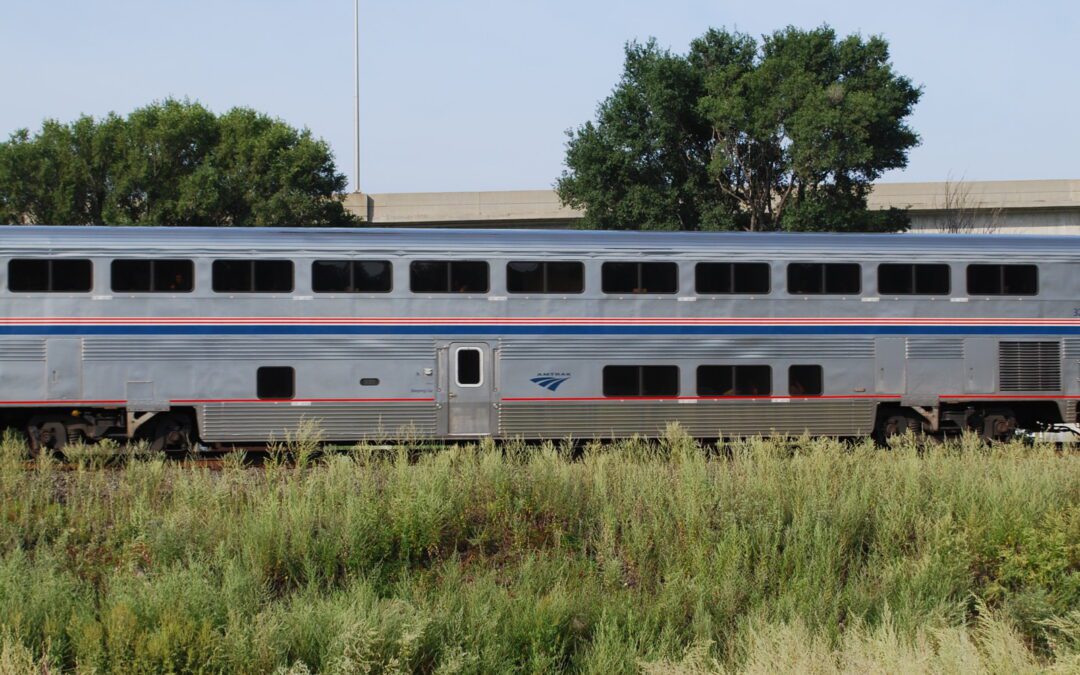California will expand and accelerate high-speed rail project with more funding and new partnerships, CEO says CEO Ian Choudri aims to accelerate and expand construction on the San Francisco - Los Angeles high-speed line in 2026, marking a major milestone in the...
Revived proposal for Atlanta-Dallas high-speed line shows how national HSR network will be built over the near term
Proposals for an 800-mile high-speed line from Atlanta to Dallas, that will transform travel throughout the Southeast, are being revived by the Finley Group, a project management firm based in Birmingham, AL.
Finley was reportedly “flirting” with the idea in March 2020, just before the pandemic halted or slowed many sectors of the U.S. economy. The company has now revived the plan and is organizing a conference devoted to high-speed rail this fall. The date has not yet been set.
According to Finley, the line will “generally align” with Interstate 20 and will serve a population of more than 15 million people. It will have stations in Shreveport, LA; Jackson, MS; and Birmingham, AL. Its state-of-the-art trains will run on dedicated, elevated tracks at speeds up to 200+ mph. Travel times between Atlanta and Dallas will be cut by more than half—from about 12 hours by car to about 5 hours. Travel times between Birmingham and Atlanta will be slashed to about 1 hour—versus 2 hours by car—making it relatively easy to commute between the two cities.
Finley’s current plan is to build the line solely with private capital. One aim of the conference this fall is to familiarize potential investors and other stakeholders with the plan.
Finley aims to enter the design stage for the first segment—Atlanta to Birmingham—by 2025. It’s now putting together a memorandum of cooperation between the relevant states, which is the first step in putting its plans on the radar of state legislatures in Georgia, Alabama, Louisiana, Mississippi, and Texas.
Here’s how it all comes together
Whether or not this particular line comes together according to Finley’s timeline and vision, its plans show how a national HSR network will develop in the U.S.
It will be built segment by segment—by private as well as public entities—with each new segment multiplying the incentives to build more lines.
Consider how the Atlanta-Dallas plan fits into the projects that are already underway across the East Coast and the South.
Texas Central is close to breaking ground on a new high-speed line from Dallas to Houston. A proposed Atlanta to Charlotte line just cleared a big hurdle and is steadily moving forward. The Southeast High Speed Rail Corridor—from D.C. to Charlotte, NC—is also making steady progress, with the Raleigh, NC, to Richmond, VA, segment receiving a nearly $48 million federal grant recently. And the Northeast Corridor, running from Richmond to Boston, is set to begin running new, electrified, 160+ mph trains next year.
All of which means that—with Finley’s proposed Atlanta-Dallas line—high-speed trains are either being planned or close to operational all the way from Boston to Houston.
That’s a distance of nearly 2,000 miles by car. And it’s a really big deal.
As we pointed out in the case of Illinois and the Midwest, each segment of high-speed line multiplies the power of the overall network and tilts the incentives further in favor of adding more high-speed lines.
For example, a stand-alone high-speed line from Atlanta to Nashville or Jacksonville might not make sense. But when there’s already a line running from Atlanta to Dallas? In that case, Nashville and Jacksonville have all kinds of incentives to connect with it. Because by adding just one segment—to Atlanta—they’ve also connected themselves via HSR to much of the South and the East Coast.
Similarly, when Nashville is plugged into a high-speed network, cities like Memphis, St. Louis and Indianapolis will have irresistible incentives to connect with it. And when Jacksonville is connected to Atlanta, cities like Orlando, Tampa and Tallahassee will have strong incentives to connect with it.
And so on. In short, success breeds success. When there’s a flourishing network, the incentive structure simultaneously pushes it outward—to cover the entire region—and pulls other regional high-speed networks toward it.
And soon, what once seemed impossible is the new reality.
The Latest from HSRA
Our Latest Blog Posts
Check out the latest news, updates, and high speed rail insights from our blog!





